You may have seen our blog 2 years ago on this historic bit of Surrey Canal infrastructure. The only remaining section of canal bank, which marked the junction of the Camberwell branch (1810) with the Peckham branch (1830) of the Grand Surrey Canal, has probably stood in this position, if not this state, for 120-150 years.
However, although still absolutely solid, the surface is beginning to crumble and become unsightly, especially for the new flats opposite, and the council have been determined to replace it. Work started at the beginning of 2017 on a like-for-like replacement (rather than suburban bypass-style concrete block planters), as far as funds and practicality allow. The top end of Surrey Canal walk has been closed whilst this happens.
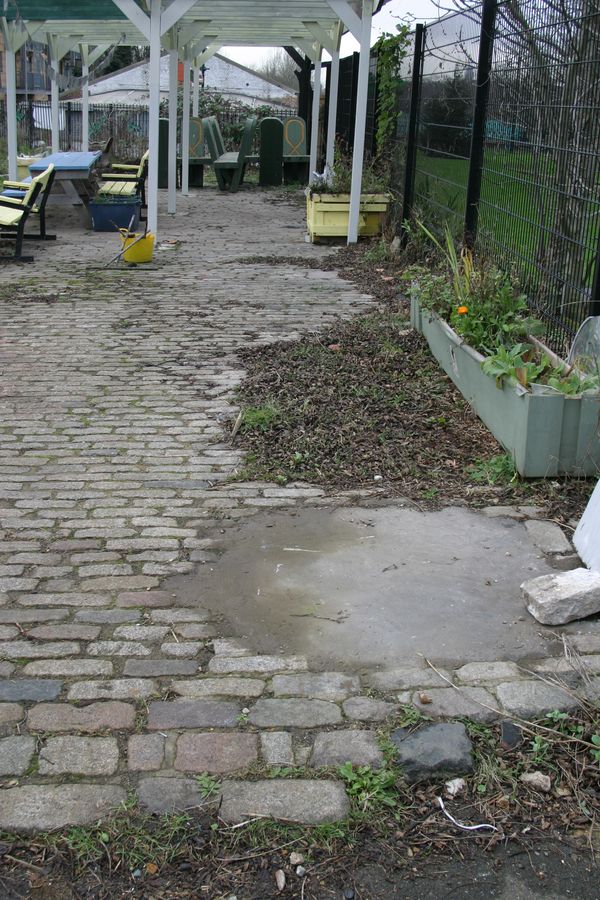
First up was the removal of a two metre-wide strip of the beautifully worn cobbles on the top surface, which now forms the ground level for the Glengall Wharf Community Garden.
The work has been majorly disruptive for the garden, involving the removal of a fine old self-seeded plum tree and many garden structures. However, it was arranged to take place in winter, outside the growing season, to at least minimise this.
These cobbles, known as granite setts, have been taken up with a JCB and as far as possible preserved for replacement when the wall work is complete. It was thought that they’d been set solidly in concrete, but they’ve mostly come away cleanly, minus a few breakages.
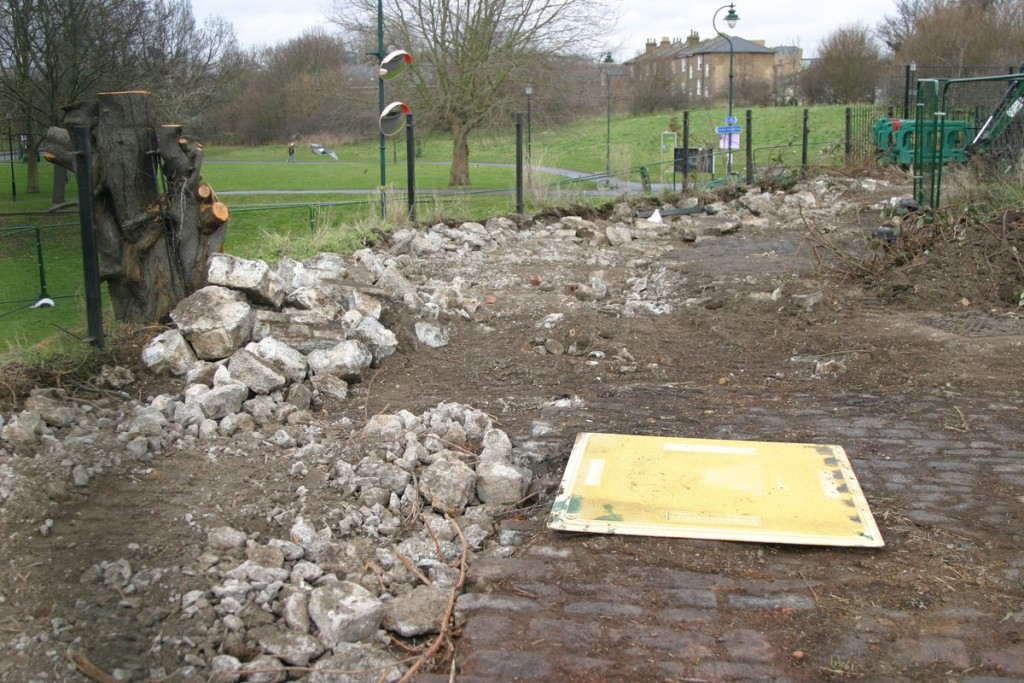
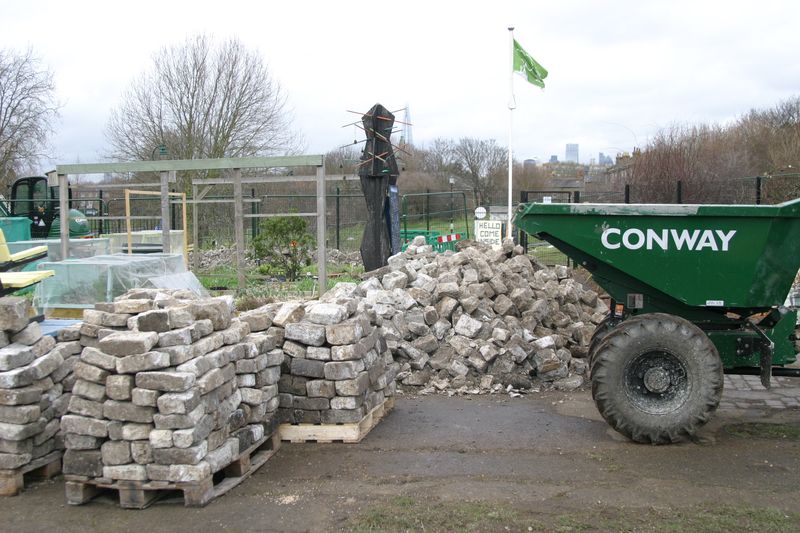
Around the end of January, work started on excavating beneath the garden surface and removing soil from behind the wall. Here things got interesting for the contractors, as they discovered the foundations of the rubbish chutes, visible in the photo beneath, and on our previous blog
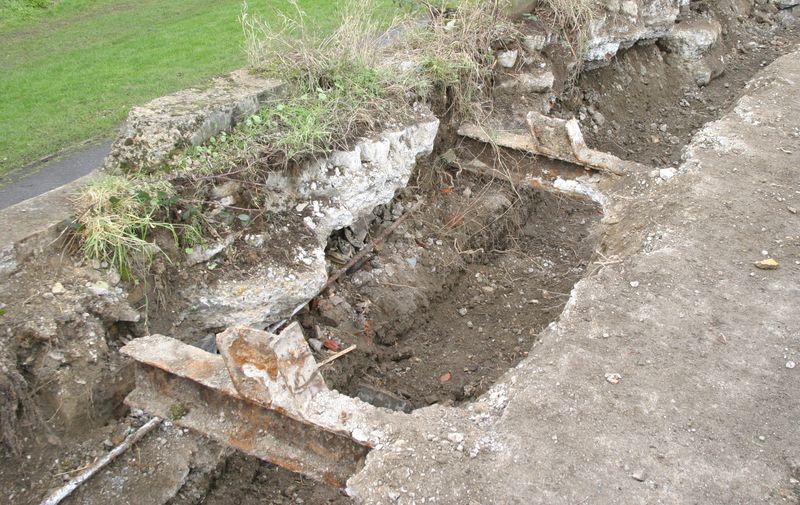
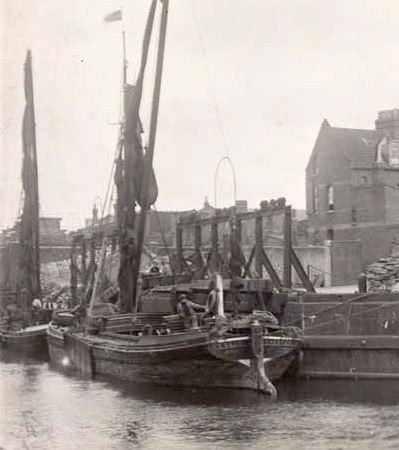
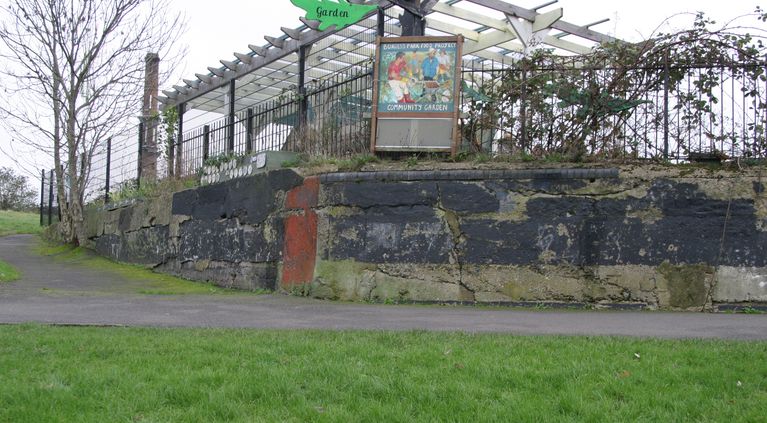



Maybe I am just getting on a bit and sometimes don’t like change, I am saddened that this wall has been removed, yes it was old but it had history, I cannot believe that the people in flats opposite could complain about it, it was not unsightly in my opinion. Oh well, what will be will be.
I’m with Roger on this one. I also overlook the gardens from my fifth floor flat and I’m on the RA committee for Galleria Court – at no time has anyone complained about the wharf being unsightly. I’m saddened by the decision to remove the last identifiable feature of Glengall wharf. Part of the park’s charm is precisely its range of odd features – entrances for roads that no longer exist, bridge etc. As a narrow boat owner I also think it’s a shame that the canal was so quickly filled in during the sixties – what an unimaginative, quick fix strategy. You only need to visit the Regents canal to see the importance of retaining this part of our industrial heritage. Equally upsetting though is the cost of this superfluous operation – on average five men working here per day with all the necessary plant over 2/3 months. The wall was not a danger of any kind and quite a robust structure – the time and effort involved in destroying it are a testimony to this. I’m amazed that, in such times of austerity, that the money’s there for this kind of thing. Finally, the Trafalgar bridge. Again months of costly works just to strengthen something which isn’t that old. Moreover, if they’d had an ounce of imagination wouldn’t it have been an idea to create an underpass here ? – us cyclists would have appreciated it and so would the motorists. Rant over…
Hi Roger
Thanks for setting the record straight on complaints. Perhaps I unwittingly perpetuated a rumour there, so it’s good to know the nearby residents are supporting the heritage side of things. A lot of us question the council’s priorities and decisions all over the borough – I could start citing examples…! The bridge works are all just about inspection, not even strengthening. The next thing I’ll need to blog about is the upcoming removal of New Church Road, and another chunk of history. As you imply, maybe making the park prettier but each time less distinctive. Bit by bit erasing the heritage.
As someone who has enjoyed R White’s lemonade for years, I’ve really enjoyed reading these bits of history, I had no idea Elvis Costello’s dad was involved in the Secret Lemonade Drinker ad and I am sorry that so much effort has gone into removing the wall as described above, but it is very good to have some of the history preserved here.
This is a very interesting article. Are the works now finished? I am thinking of taking a trip over there to look but don’t want a wasted journey. My interest is Victorian bottles. Thank you.
They are indeed complete – there’s a nice shiny (literally – anti-graffiti coating!) new concrete wall. It’s looks nothing like the original, but at least it’s the exact same shape and position as the original. They made a lovely job of re-laying the cobbled yard above – if you go on a Sunday afternoon when the garden’s open, you can visit and see it.
The insensitivity shown by the council in unnecessarily demolishing and rebuilding the Glengall Wharf wall, the last bit of local canal heritage, is sadly of no surprise. South London has always been treated very shabbily over many years, from the deplorable and inhuman redevelopments of the 1960’s when high rise and concrete was the only solution, thrust upon happy established communities, only to split them up, making them move all over the place. Yes, shake the authorities up abit…campaign to restore the Surrey Canal to Burgess Park Lake….what an amazing project it could be!!